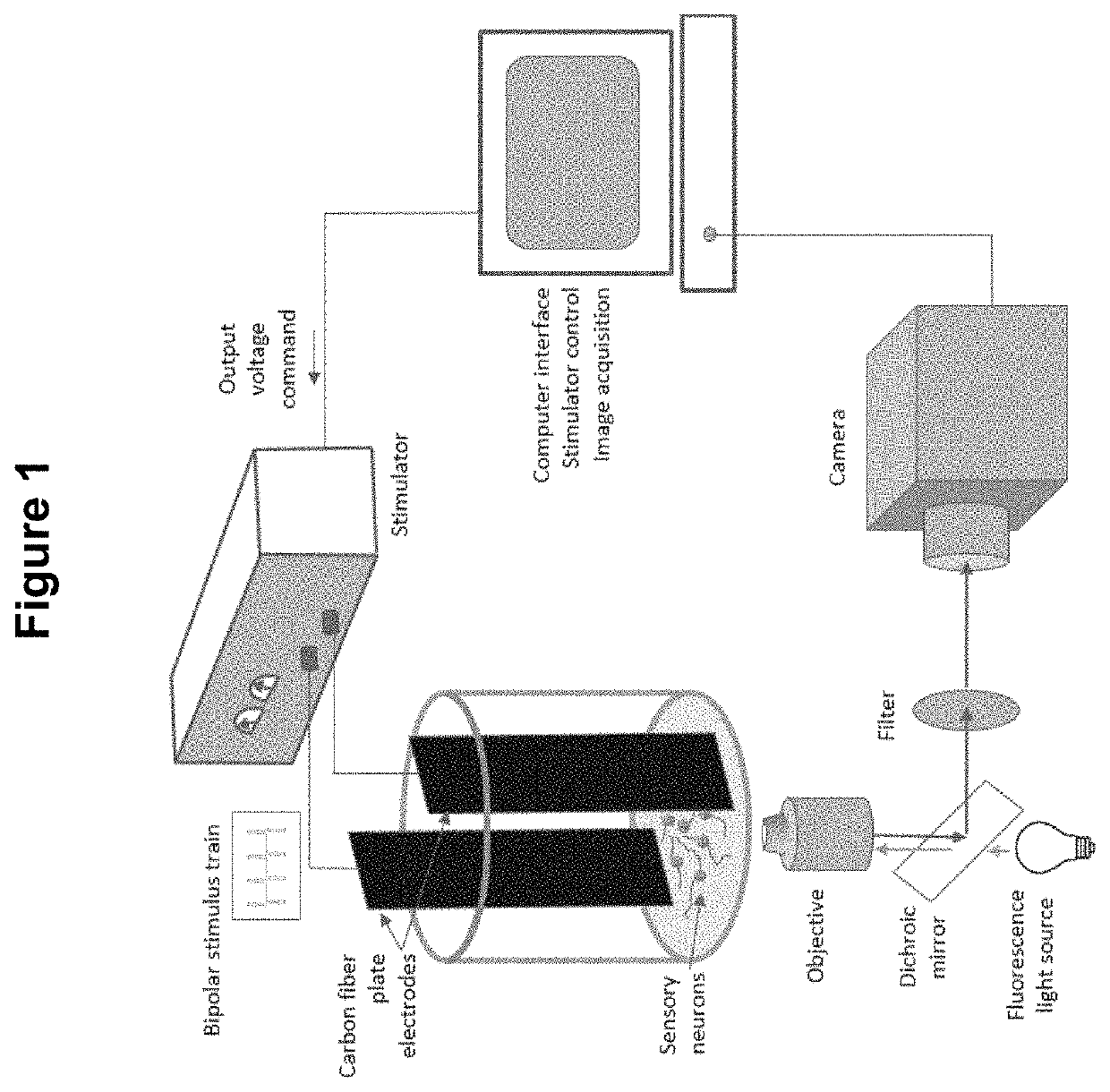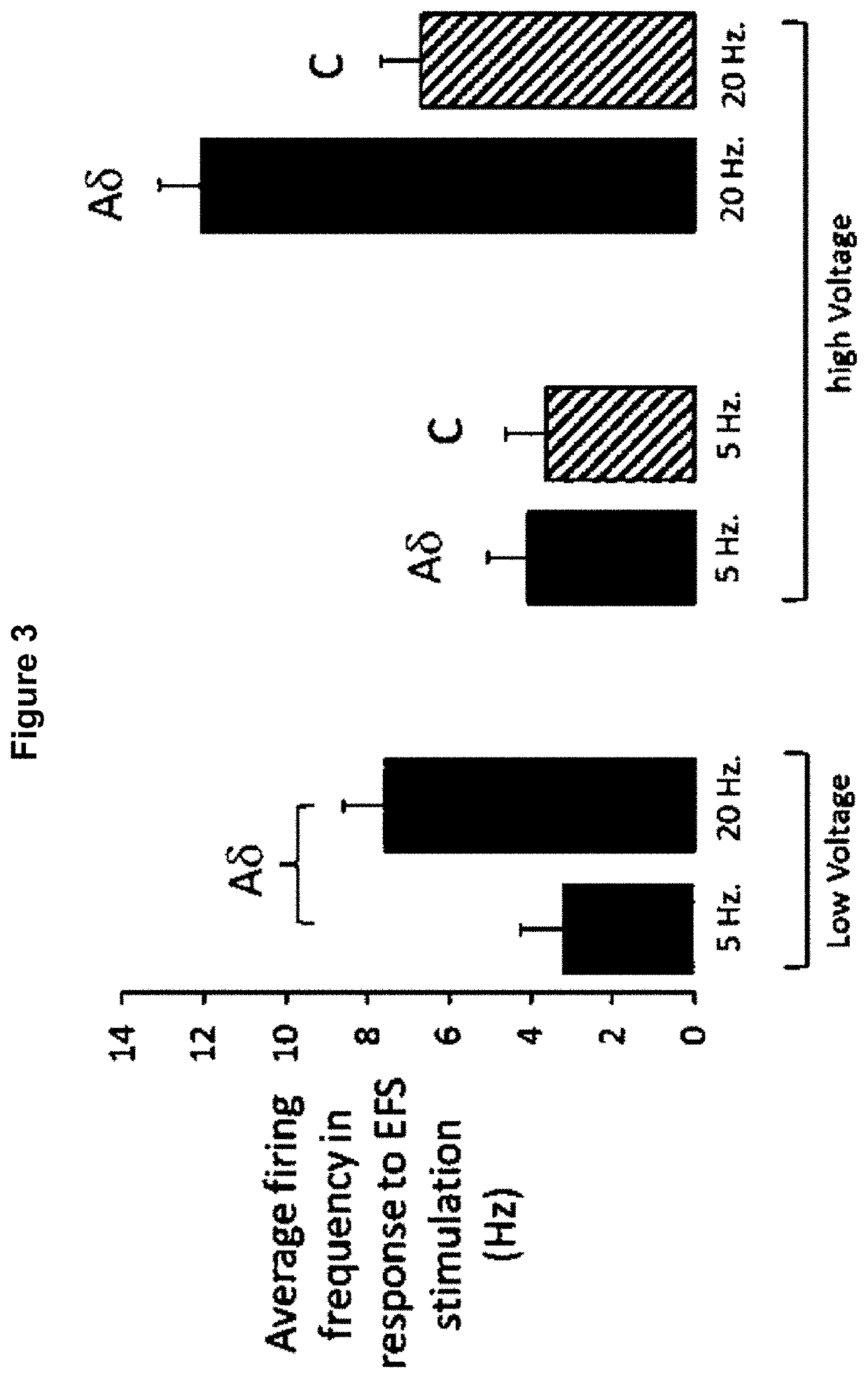Method for the identification of sensory neuron subtypes in ex vivo preparations
a technology of sensory neuron and ex vivo preparation, which is applied in the field of drug discovery, can solve the problems of serious side effects and/or addiction risk of several current therapeutic options, and it is extremely difficult to decide the most appropriate therapeutic use of a new potential analgesic, and achieve the effect of assessing the efficacy of the drug
- Summary
- Abstract
- Description
- Claims
- Application Information
AI Technical Summary
Benefits of technology
Problems solved by technology
Method used
Image
Examples
examples
Methods
[0072]Human DRG Neurons Isolation and Culture:
[0073]DRGs from the first thoracic vertebra (T1) through the first sacral vertebra (S1) were used in the present study. Human DRG neurons where isolated from organ donors for which full legal and ethical consent had been obtained. The DRGs were stripped of connective tissue and enzymatically digested at 37° C. for 2 h using AnaBios' proprietary enzyme mixture. Samples were then centrifuged for 2 min at 200×g, supernatant was gently removed, and tissue was washed 4 times, followed by resuspension in DMEM / F12 (Lonza) containing 1% horse serum (Thermo Fisher Scientific). Ganglia were mechanically dissociated by gentle trituration through the fire-polished tip of a sterile glass Pasteur pipette. Dissociated cells were seeded on glass coverslips that had been pre-coated with poly-D-lysine (Corning) for electrophysiology experiments or in 96-well plastic bottom plates (Corning) that had been pre-coated with ply-D-lysine. Cells were main...
PUM
 Login to View More
Login to View More Abstract
Description
Claims
Application Information
 Login to View More
Login to View More - R&D
- Intellectual Property
- Life Sciences
- Materials
- Tech Scout
- Unparalleled Data Quality
- Higher Quality Content
- 60% Fewer Hallucinations
Browse by: Latest US Patents, China's latest patents, Technical Efficacy Thesaurus, Application Domain, Technology Topic, Popular Technical Reports.
© 2025 PatSnap. All rights reserved.Legal|Privacy policy|Modern Slavery Act Transparency Statement|Sitemap|About US| Contact US: help@patsnap.com



